Discovering VMware ESX / ESXi servers in RMM Central
To discover the host and the VMs, you just need to provide the IP Address/DNS Name and the vSphere credentials of the vCenter/ Host.
Note that the vSphere user must have access to all hosts and VMs (at least Read access) in order to monitor the devices without any issues. In case a user wants to execute actions like powering on/off VMs, please make sure that user has sufficient privileges for those actions (providing Administrator privileges works in most situations).
Discover vCenter: Use discover vCenter with the vCenter's VMware credentials, to discover all the hosts, VMs and datastores managed by that particular vCenter.
Discover ESX: Use discover ESX with the ESX's VMware credentials, to discover the host along with its datastore and VMs.
Configuring VMware credentials
Before proceeding, ensure that you have configured the VMware credentials for the vCenter/ ESX host and the SNMP and WMI credentials for the VMs in the credential library.
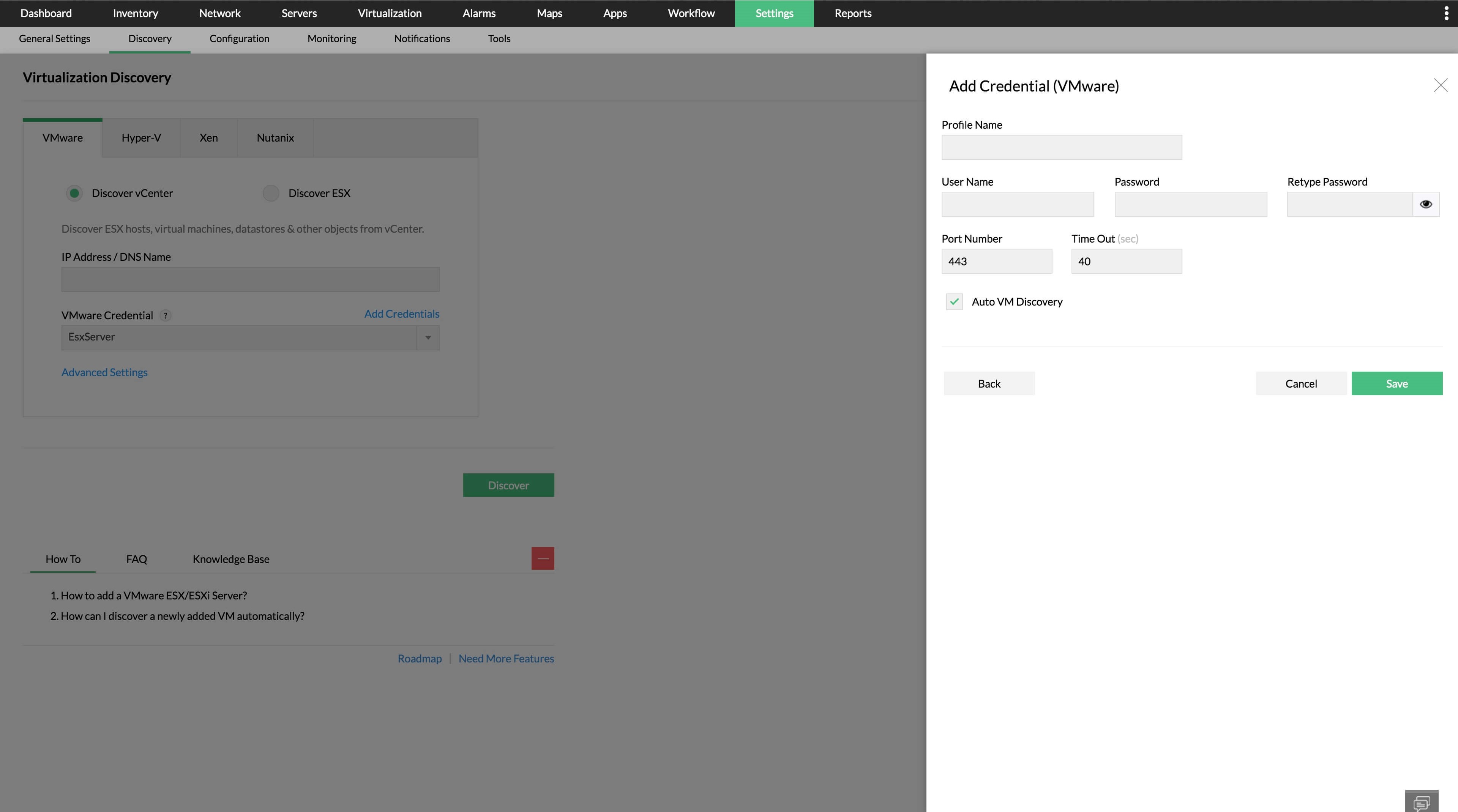
- Go to Settings → Discovery → Credentials → Add Credentials (or) Settings → Discovery → Virtualization Discovery → Add Credential.
- Select VMware as the Credential type and enter the vCenter/ Host's vSphere login Username andPassword.
- Enter the HTTPS (VMware web service's) port number and timeout interval for the connection between the vCenter/ Host and the RMM Central.
- Select the Auto VM Discovery option to automatically discover any new VMs that are henceforth created in the vCenter.
- ClickSave to add the credential.
Similarly, add the vCenter's SNMP/WMI/CLI credentials to monitor additional performance metrics such as disk partition, process count details, etc., in vCenter servers. Select the Credential Type as WMI for Windows, CLI for Linux and SNMP for other non-Windows OS.
Discovering vCenter/Host
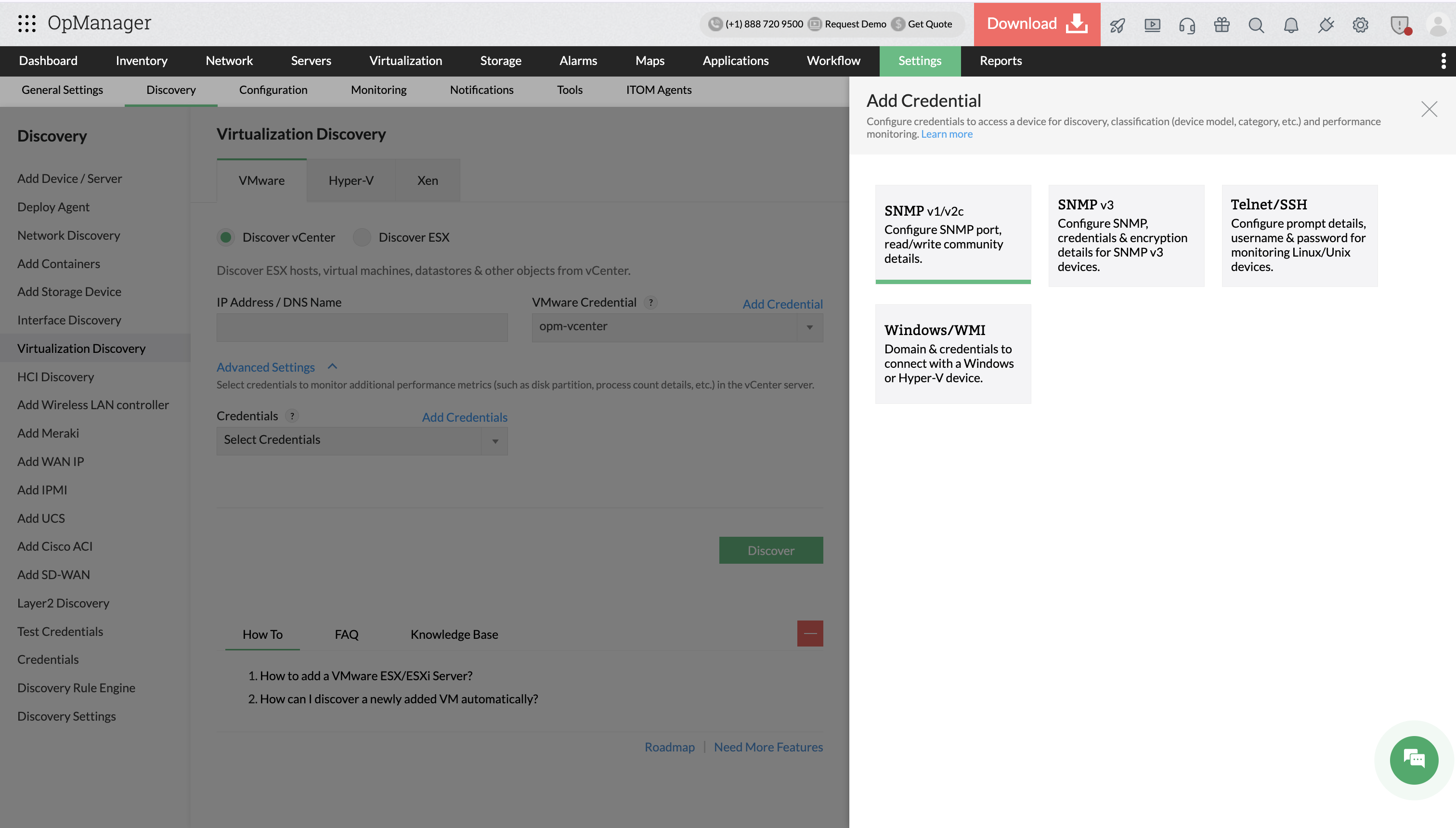
- Go to Settings → Discovery → Virtualization discovery → VMware.
- If you wish to add and monitor VMs and their corresponding ESX hosts in a vCenter, select vCenter Discovery. Or, if you wish to monitor only a particular ESX host, select ESX Discovery.
- Enter the vCenter server's DNS Name/ IP Address.
- Select the appropriate vCenter's VMware credentials and other dependant SNMP/WMI/CLI credentials.
- Click Next to list all the hosts and VMs in a particular vCenter.
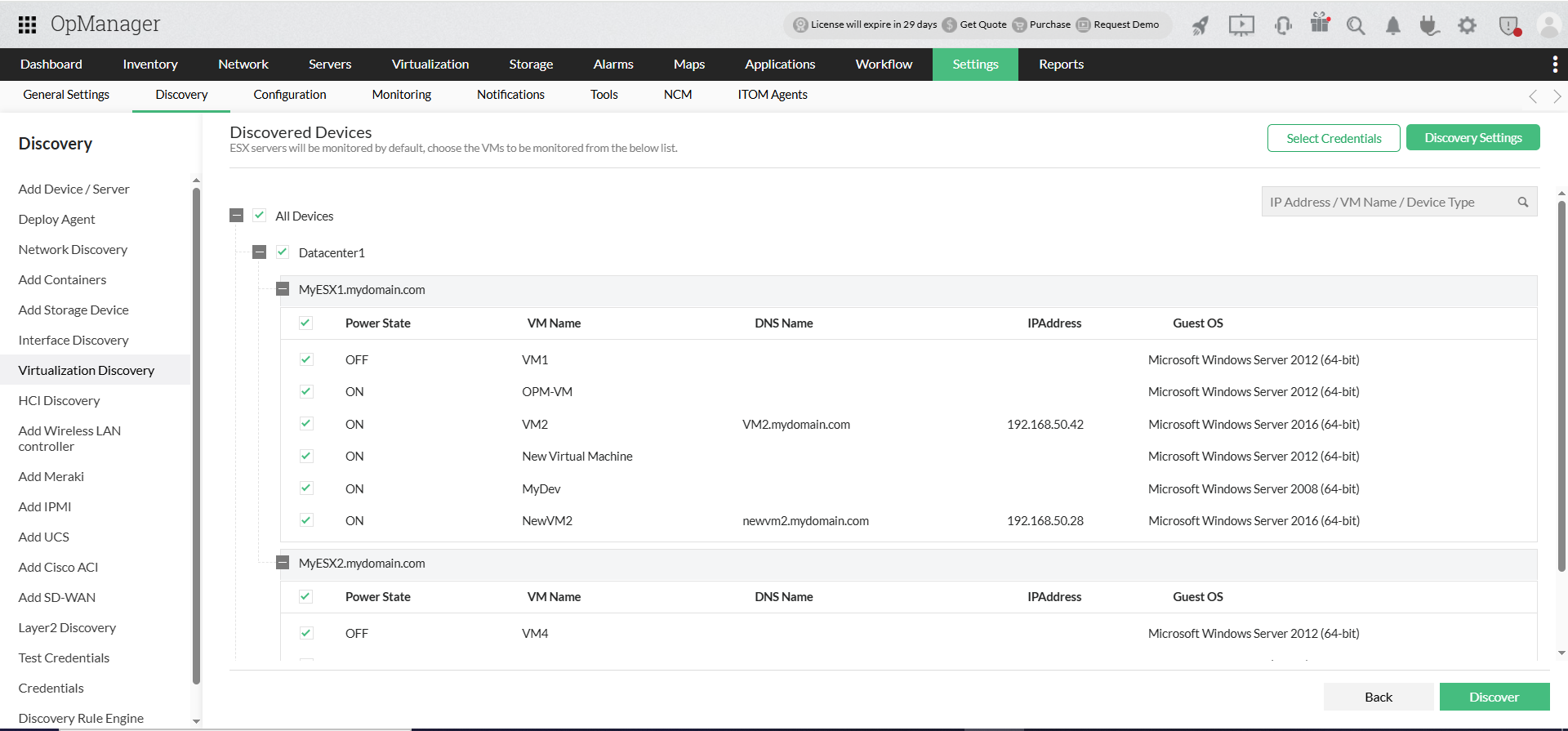
- By default, all hosts will be added to RMM Central. However, you can select the VMs that you want to discover.
- Click Next to select the VM's SNMP/WMI/CLI credentials for in-depth monitoring. You can also select multiple credentials.
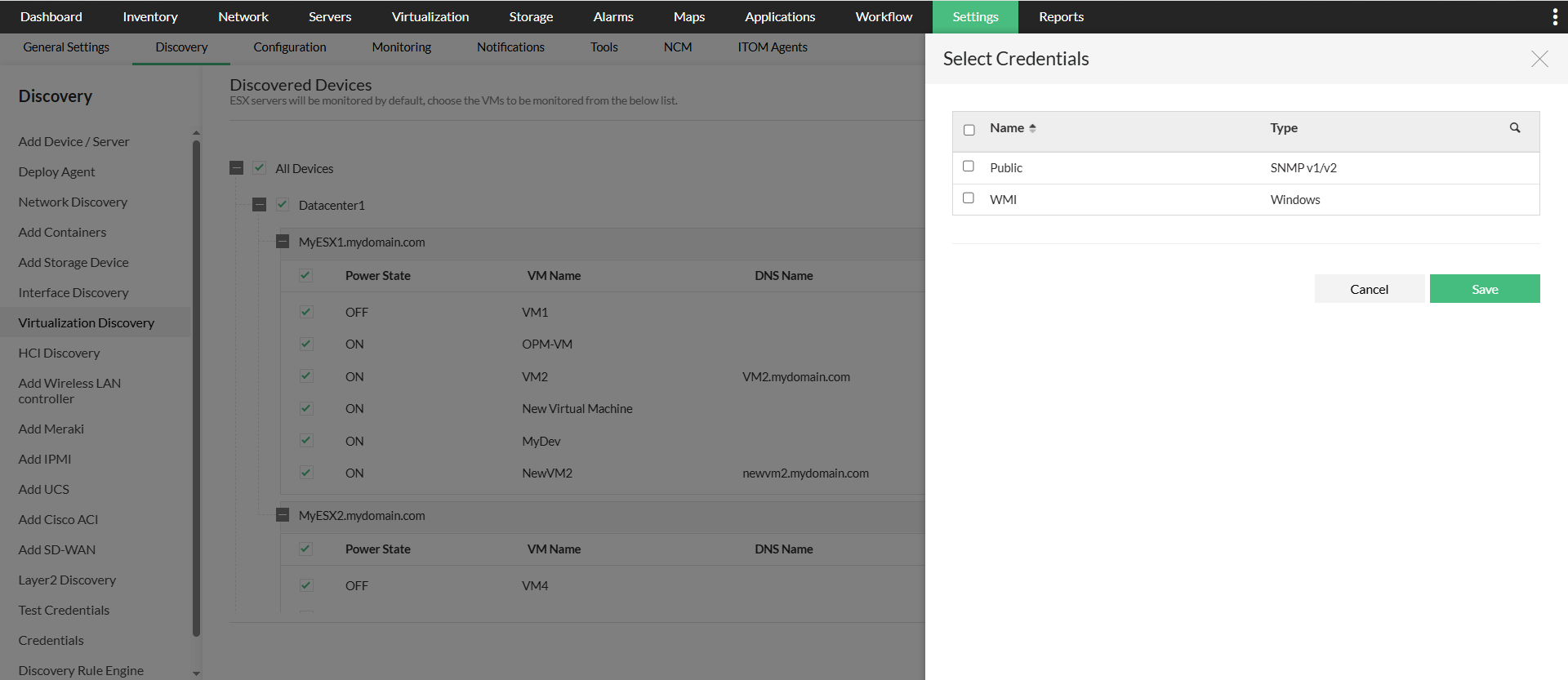
- You can choose the time interval in which want any changes in the vCenter environment should be automatically updated in RMM Central by choosing a value for Scan vCenter/ ESX Interval (hrs). This will automatically rediscover any changes in the vCenter environment.
- Also, you can choose whether to sync the display name of the virtual device (the name that will be displayed in RMM Central) with the entity name by enabling the "Sync entity name with display name" button.
- You can choose whether you want to receive status messages of your Physical NIC/Host Bus Adapters by choosing to enable the "Raise alerts for Physical NIC & Host Bus Adapter" option.
- Once you're done, click 'Discover' to start the discovery process.
If any of the VMs are already discovered or added, RMM Central automatically maps them as virtual devices.
Configuring VM IP Address
RMM Central, with the help of the installed VMware Tools, identifies the IP address of the VM and maps it to the host. If VMware Tools are not installed, RMM Central discovers it using the VM's entity name. You can assign the IP address manually for such VMs in the host's snapshot page. (Navigate to Inventory -> Devices and then click on the device to open its snapshot page.)
If VM's are not discovered/ mapped to its vCenter/Host because of an unassigned IP address, you can assign an IP address in the vSphere environment. RMM Central will automatically map that VM to its vCenter/Host. (or) You can manually assign an IP address to a VM by following the simple steps below.
- Go to the vCenter/Host's snapshot page → Virtual Machinestab.
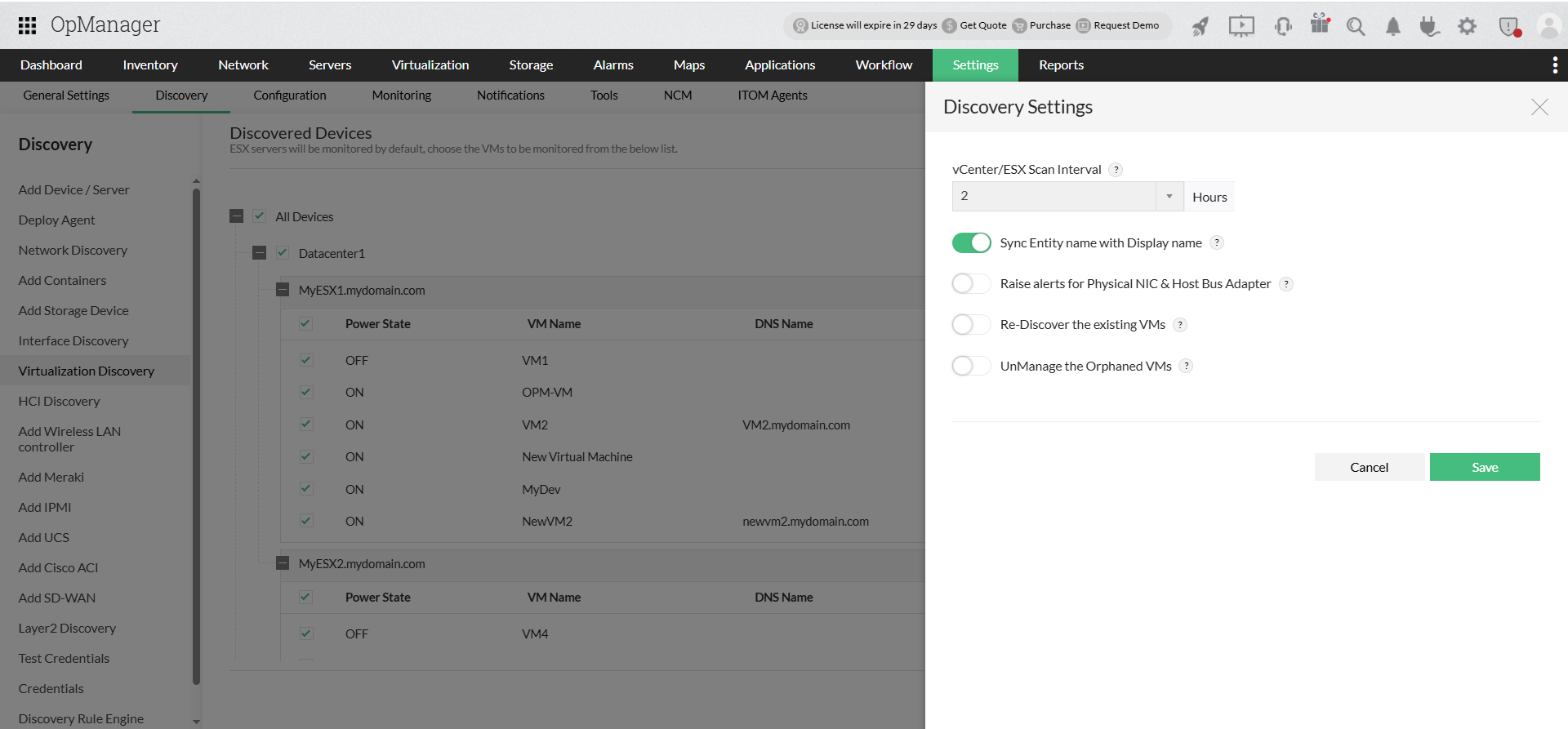
- Click the start monitoring button in the Monitoring column for devices that are not monitored.
- This will open IP Mapping. Enter the VM's IP address/ DNS name and the corresponding credentials to rediscover and map the VM to its vCenter/Host.
You can now choose to monitor only the required VMs on a Host. If you wish to stop monitoring a VM, you can do so by clicking on the Stop monitor button of the corresponding VM under Virtual Details tab in the vCenter/Hosts snapshot page. Select the relevant icon to stop monitoring the required VMs on the host. RMM Central maintains this configuration when a HA, VMotion, or rediscovery happens.




